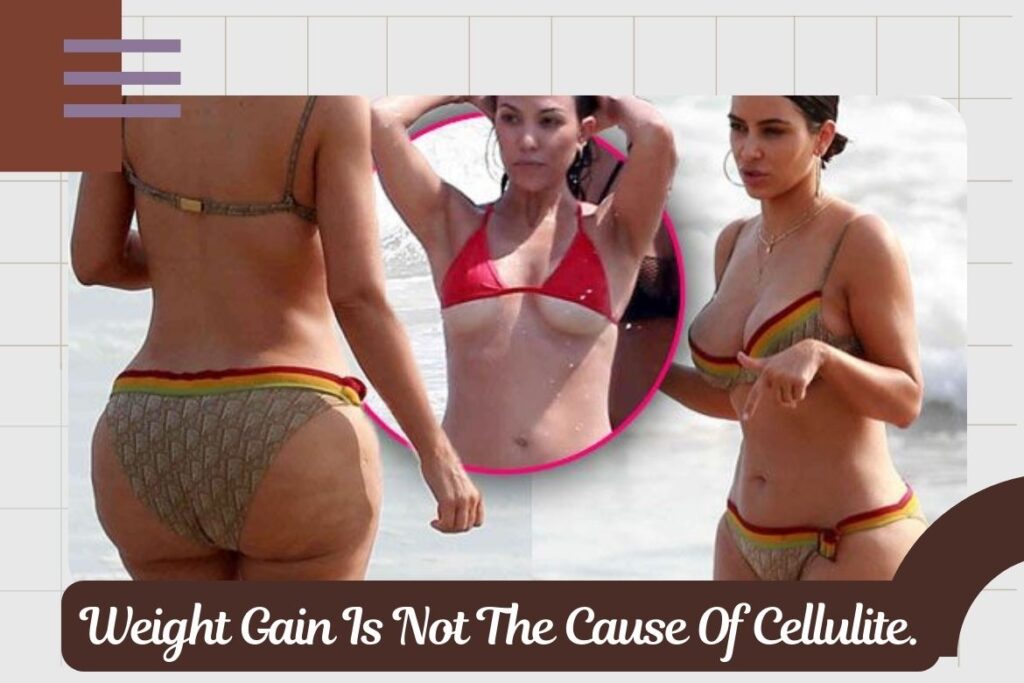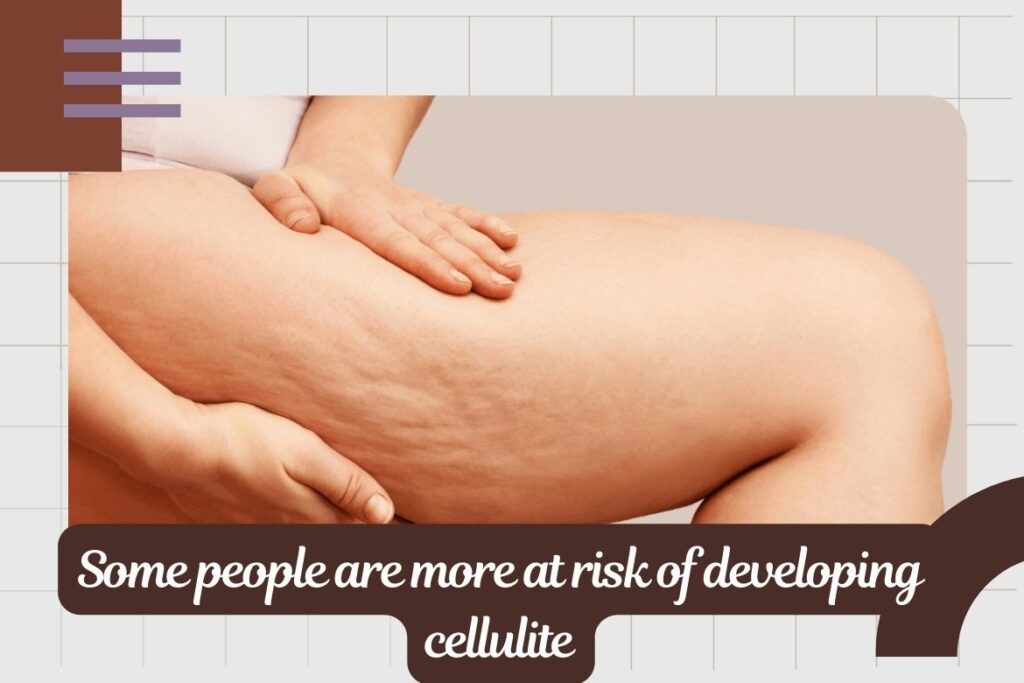Cellulite, sometimes called “orange peel skin” or “dimples”, is an internal change in the fatty tissue under the skin. It is primarily unsightly, but can sometimes lead to some more serious problems. According to researchers, over 80% of all women have cellulite!
Cellulite is made up of large fat cells, located under the skin, which get fat and hypertrophy. It is generally located on the thighs, buttocks, stomach and even arms. How does cellulite form? What are the main risk factors? Can it be prevented? How can it be treated? So many questions for which you will find answers.
Cellulite: where does it come from? How to get rid of it?

Cellulite: what is it?
Cellulite, also known as dimples or orange peel skin, is the result of a change in the structure of the fatty tissue under our skin. It gives the skin a “bumpy” and unsightly appearance. It is mostly observed on the back of the thighs and on the buttocks.
It affects almost exclusively women, for whom doctors consider it a normal physiological phenomenon. In fact, nearly 9 out of 10 women are affected at some point in their lives, while only 1 out of 50 men is affected.
The moment of its appearance varies greatly from one person to another. It depends on many aggravating factors. There is no way to get rid of cellulite completely, unless it is very slight.
It is possible, however, for some people to improve the appearance of their cellulite through various means. However, the effect of the treatments is temporary and they must be repeated to benefit in the long term.
It should be noted that in addition to this so-called aesthetic cellulite, there is also infectious cellulite caused by the penetration of bacteria under the skin, through a lesion. In this case, it is a serious condition that must be treated urgently in hospital.
You can also find on takediy.com:
What Causes it?
Its causes are multifactorial and are not yet clearly established. Factors that appear to influence its appearance include:
- inflammation reactions;
- Female sex hormones;
- Heredity;
- physical exercise;
- diet.
Cellulite or “Dimples” involves a change in the structure of fat located on the surface, under the skin, in specific areas of the body. The deeper fat that is sometimes removed by liposuction has no effect on the appearance of the skin.
The cells that store the fat are housed in small “chambers” that are bounded by “walls” of elastic connective tissue. The skin forms the “ceiling” of these chambers.
In the presence of cellulite, there is an increase in both the number of fat cells and water retention. The chambers swell, the walls become bulging and consequently pull on the skin, giving it a padded appearance.
What are the possible complications from it?
Although cellulite is essentially an aesthetic problem, it can cause some physical discomfort and even pain. Over time, cellulite tends to become denser, causing increased pressure on the nerve endings and hypersensitivity of the affected area.
For some women, palpating, touching, or even just brushing against their cellulite areas produces a sensation that can be quite painful. In addition, “old” cellulite can impede the local circulation of lymphatic fluid.
how to recognize it?

Some people are more at risk of developing cellulite. Also, some risk factors favor its appearance.
What are the symptoms of cellulite?
It generally appears :
- On the back of the thighs;
- On the buttocks
- On the stomach;
- On the back of the neck ;
- On the upper arms;
- On the inside of the knees.
Cellulite-like symptoms include:
- A feeling of constriction and heaviness in the affected areas;
- Sensitivity to palpation or pressure, during a massage for example;
- Cramps in the legs.
Who is at risk for it?
Women are more affected than men for the following reasons:
- Female hormones such as estrogen and prolactin during pregnancy contribute to cellulite;
- Puberty, pregnancy, breastfeeding, menstruation and estrogen treatments are often triggers.
Female hormones stimulate the accumulation of fat and make the connective tissue less supple. Moreover, the female body is more sensitive to cellulite because it contains twice as many fat cells as the male body. Men’s skin is thicker and their fat cells are smaller and tighter.
Women whose mothers have had skin that is strongly marked by cellulite are more likely to be affected in turn.
Finally, Caucasian women are more likely to have cellulite than Asian or black women, for reasons that are still unknown.
What are the Risk Factors of Cellulite?

Diet: what foods to avoid to fight against it ?
Excessive salt intake, a diet rich in sugars and fats and low in dietary fiber may contribute to it.
Lack of physical exercise
A sedentary lifestyle contributes to the aggravation of cellulite. The muscles of the legs act as a pump to help blood circulate in the veins.
A poorly developed muscle mass therefore tends to slow down the circulation of blood in the leg veins, called “venous return”.
Smoking
Nicotine alters the circulation of blood in small blood vessels and decreases tissue oxygenation.
Taking medication
Cellulite can result from taking certain medications such as
- oral contraceptives;
- estrogens
- antihistamines;
- corticosteroids.
Ask your doctor or pharmacist for more information.
Does the weight have an influence on it?
According to experts, weight gain is not the cause of cellulite. In fact, it seems to be found in thin women as well as overweight women. However, weight gain could make it more apparent.
how to avoid it?
The appearance of cellulite can be prevented or even slowed down thanks to certain measures that can be put in place. Here are all our explanations.
preventive measures
Can we prevent it?
It is generally impossible to prevent cellulite, since hereditary and biological factors often come into play.
Regular physical exercise and a healthy diet help maintain good skin tone and blood circulation for as long as possible.
Measures to prevent the aggravation of it ?
If you have cellulite on your buttocks or legs, be careful not to make it worse by blocking the flow of blood from the legs to the heart.
Wear clothes that are loose enough
If clothes are too tight around the legs or waist, it is more difficult for blood to flow back to the heart through the veins.
Vary your posture
Avoid standing or sitting in a static position for long periods of time.
Avoid heat
Heat dilates the veins, while cold tones them. It is therefore recommended to avoid taking very hot showers and baths regularly.
Favour flat-heeled shoes
Flat heels make the calf muscles work harder and therefore help the veins do their work.
To Read Also :
- Bikini Waxing For Beginners : Everythings You Need To To Know
- The 10 Most Beautiful Women In The World (According To Science)
- 10 Easy Diy Natural Homemade Beauty Products
- 13 French Women’s Beauty Secrets
1 comment
[…] of beauty ? BEAUTY IN AFRICA Monochrome Makeup: TikTok’s Natural And Makeup Trend Of… Cellulite Problem 80% Of Women : Everythings You… How To Do Brazilian Bikini Wax Yourself ? Bikini Waxing for Beginners : Everythings You Need… […]